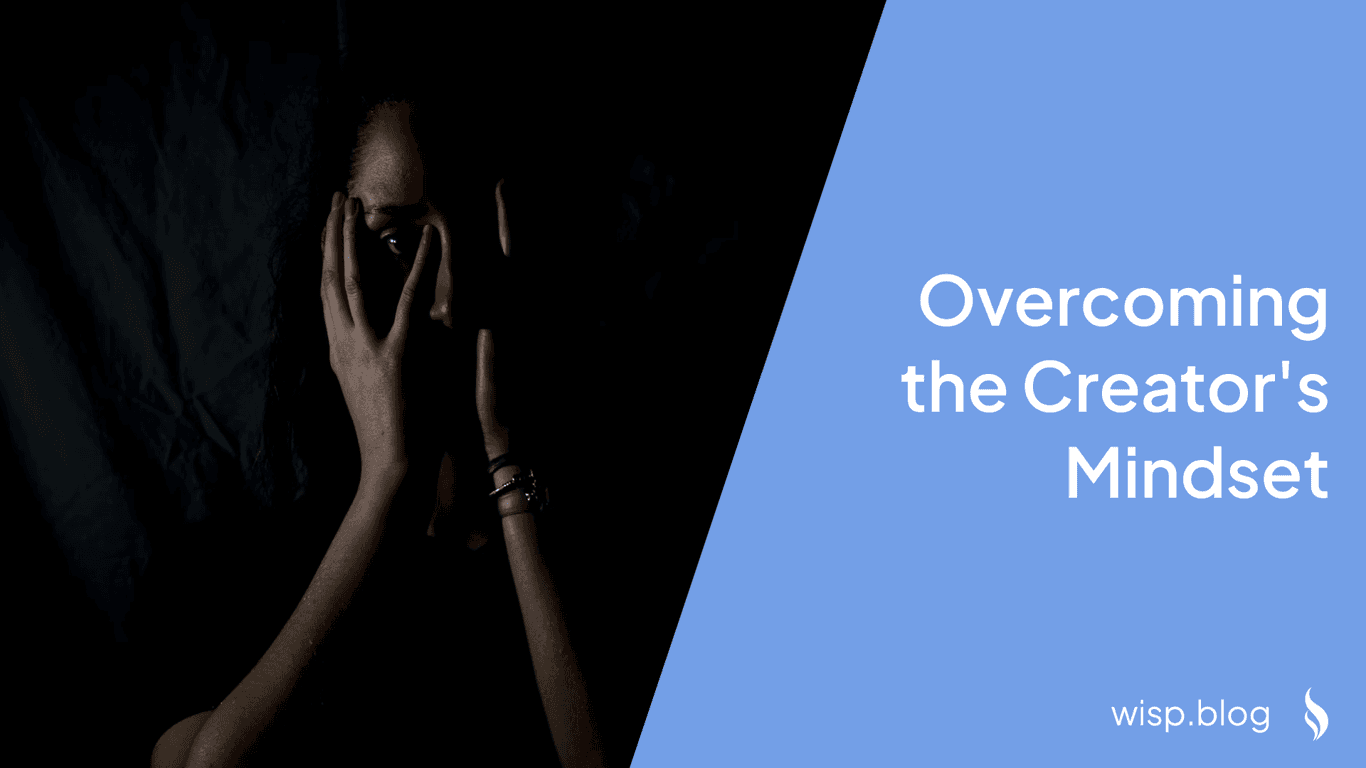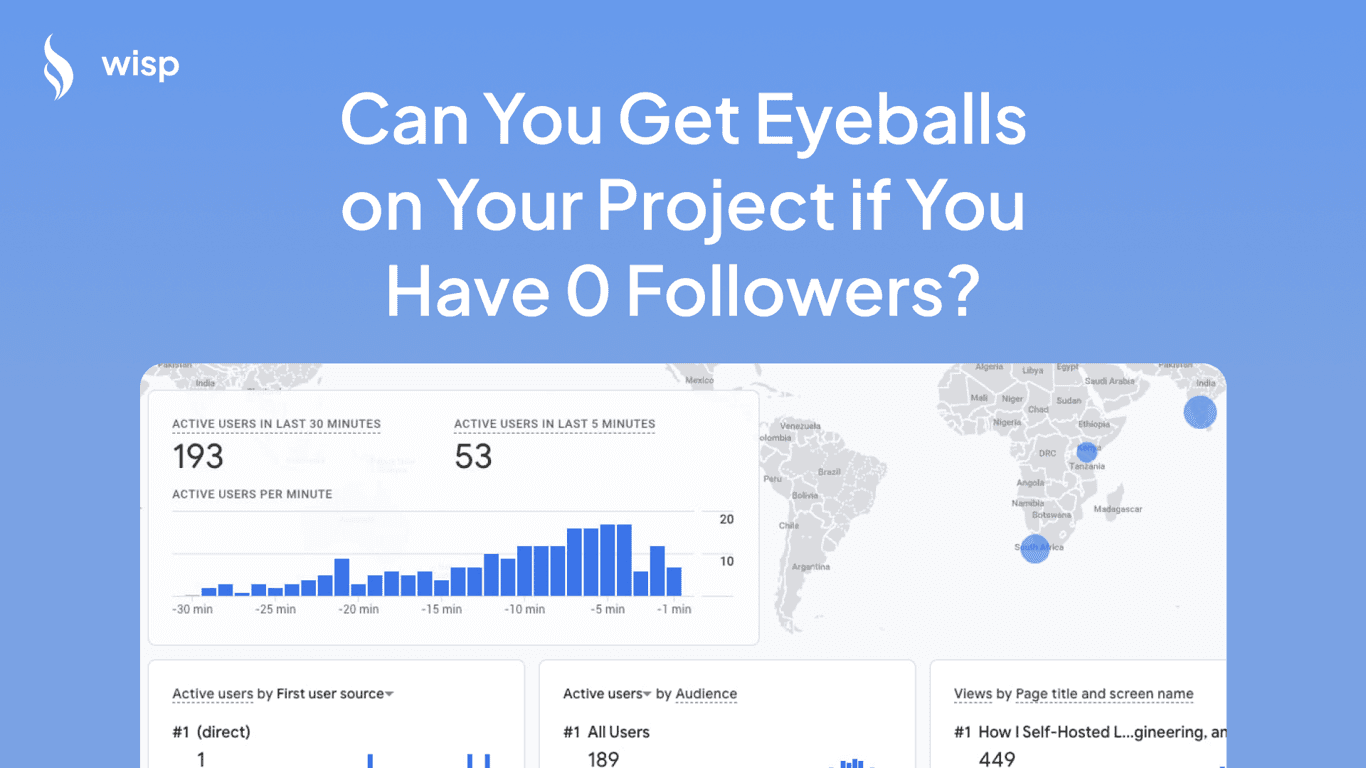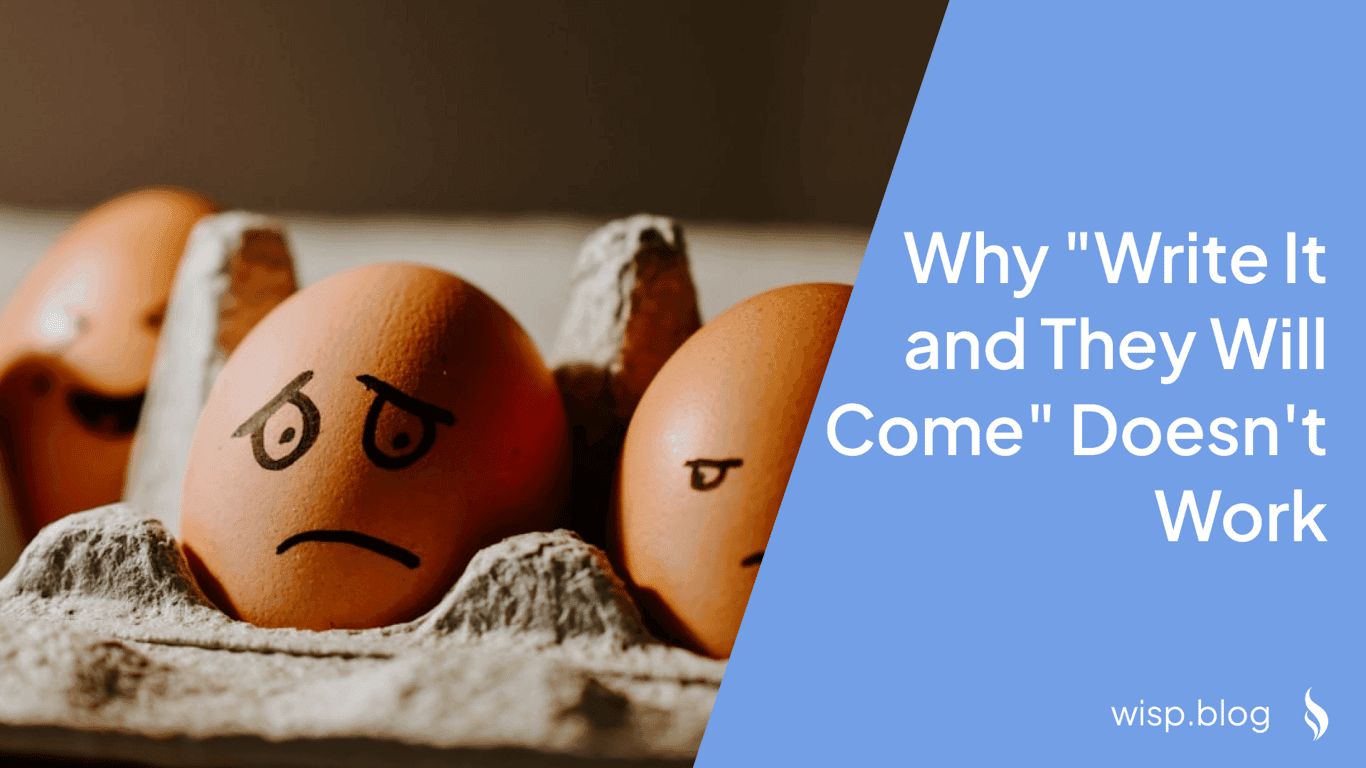
Hey there, fellow content creators and LinkedIn enthusiasts!
I'm Raymond, founder of wisp, and I'm thrilled to share my journey of overcoming the dreaded "content drought" on LinkedIn. If you've ever felt the pressure to post daily or struggled to find authentic topics, you're not alone. I've been there, and I want to share how I turned things around.
The Early Days: Anxiety and Inauthenticity
When I first started posting on LinkedIn, I was a mess. Like many of you, I followed all the "expert" advice:
Created detailed content calendars
Brainstormed topic matrices (you know, those X vs Y grids)
Tried to post every single day without fail
I even followed LinkedIn gurus like Justin Welch, hoping to crack the code of consistent content creation.
The result? I felt inauthentic, anxious, and like I was forcing content that wasn't really "me."
Sound familiar?
Let me paint you a picture of those early days:
I'd sit at my desk, staring at an empty content calendar, feeling my heart race as I realized I had nothing planned for the next day. The pressure to come up with something – anything – was overwhelming. I'd end up crafting posts that felt hollow, like I was just echoing what others were saying rather than sharing my own unique insights.
There were nights when I'd lie awake, worrying about what I was going to post the next morning. It was as if my worth as an entrepreneur was tied to my ability to churn out daily LinkedIn content.
Looking back, it's clear how unsustainable and unhealthy this approach was.
The Turning Point: Rethinking My Approach
Recently, I decided to take a step back and reassess my strategy. This wasn't just a minor tweak – it was a complete mindset shift.
Here's what I realized:
Quality over quantity: I don't need to post every day. In fact, 2-3 thoughtful, well-crafted posts a week can be more impactful than daily noise.
Impressions last: LinkedIn posts continue to get impressions for weeks, not just on the day you post. This was a game-changer for me – realizing that my content had a longer shelf life than I thought.
Authenticity matters: Being interesting and true to myself is far more important than being consistent for consistency's sake.
This realization came after a particularly stressful week where I had forced myself to post daily, even when I had nothing meaningful to say. The engagement on these forced posts was low, and I felt disconnected from my own content. It was then that I decided to change course.
My New Content Strategy: Embracing the Interesting
Here's how I now approach content creation for LinkedIn (and pretty much this build-in-public blog too):
1. Keep an "Interesting Stuff" Notebook

I maintain a digital notebook where I jot down things that catch my attention. This has been a game-changer for me. Here's what goes into it:
Insights from building wisp (my startup)
Growth metrics and experiment results
Surprising discoveries in the world of headless CMS
Engaging conversations with other founders

For example, just 2 weeks ago, I had hit 1000 blog posts on wisp and I thought it would be cool to see who are using it. Instead of just celebrating internally, I jotted down the details in my notebook. This later became a LinkedIn post about milestone and the insights from my customers!
2. Draw from Your Life Story
Your unique experiences are a goldmine of content. I've found that sharing my personal journey often leads to the most engaging discussions on LinkedIn. In my case:
Raising $3 million for my previous startup, and the lessons learned from that experience.
My decision to choose the bootstrap route for wisp instead of seeking VC funding this time around.
Switching industries (from crypto to marketing tech?!) and approaches, detailing how my experience in one sector informed my strategies in another.
3. Tap into Community Discussions
I frequently visit subreddits like r/YCombinator, r/indiehackers, and r/ycombinator. These communities are treasure troves of:
Common questions and pain points in the startup world
Trending topics that entrepreneurs are grappling with
Opportunities to share my unique perspective based on my experiences
For instance, I've found a recurrent question from indiehackers and founders on how to find customers and get traffic from reddit without breaking the self-promotion rule. Drawing from my research and experiments, I put together a blog post and then repurpose that to comments to those posts and it's still driving traffic to wisp to this day!
Pro tip: You can repurpose your blog content into posts on LinkedIn and Reddit! It's a great way to ensure your insights reach a wider audience.
The Result: A Stress-Free Content Flow
By shifting my focus from "filling a calendar" to "sharing what's genuinely interesting," I've found that:
Content ideas come more naturally, often inspired by my daily work and interactions
My posts feel more authentic and engaging, leading to better conversations with my network
The pressure to post daily has disappeared, replaced by a genuine excitement to share when I have something valuable to say
Let me share a recent example. Just recently, I experimented with helping founders integrate wisp into their website directly which allows me to hunt down an elusive bug. After solving it, I realized the do-things-that-dont-scale approach could be valuable information for other founders. I wrote a detailed LinkedIn post about the process and the lessons learned. Not only did this post perform well, but it also led to several interesting discussions and even a collaboration opportunity with another startup facing similar challenges.
Your Turn: Embracing the Interesting
Remember, your LinkedIn audience follows you because they find you interesting. They're not there for generic advice they can find anywhere – they want your unique insights and experiences.
So, focus on sharing what truly matters to you.
Don't be afraid to:
Share your failures and lessons learned (like the time I completely misjudged our target market and had to pivot)
Offer behind-the-scenes glimpses of your work (I've found that posts about our team's remote collaboration techniques are always popular)
Ask thought-provoking questions that spark genuine discussions
By doing so, you'll not only have a steady stream of content but also build stronger connections with your audience. You'll find yourself at the center of meaningful conversations, rather than just adding to the noise.
Overcoming Content Anxiety: A Personal Story
I want to share a personal anecdote that really drove home the power of this approach. A few months ago, I was having a particularly busy week with wisp. I'm launching a new feature, and I hadn't posted on LinkedIn for over a week. In the past, this would have sent me into a panic.
But instead of forcing out a generic post, I decided to write about the launch process itself – the late nights, the last-minute bugs, the excitement and fear. I was hesitant to post something so raw and unpolished, but it turned out to be one of my most engaging posts ever. People appreciated the honesty and the real-time insight into the life of a startup founder.
This experience taught me that it's okay to be human on LinkedIn. In fact, it's preferable. Your audience wants to connect with you, not a polished, corporate version of you.
Conclusion: Find Your Rhythm
As I wrap up this post, I want to emphasize that there's no one-size-fits-all approach to LinkedIn content. What works for me might not work for you, and that's okay. The key is to find a rhythm that feels authentic and sustainable for you.
For me, that means 2-3 thoughtful posts a week, drawn from my real experiences and observations. For you, it might be something different. The important thing is to stay true to yourself and focus on providing value to your audience.
I'm excited to see what interesting content you'll share next! If you have any questions or want to chat more about content strategy, feel free to reach out. Let's make LinkedIn a more engaging place, one authentic post at a time! 🚀
Remember, every founder has a unique story to tell. Your experiences, challenges, and insights are valuable – don't be afraid to share them. Who knows? Your next LinkedIn post could be the inspiration or solution someone else has been looking for.
Keep building, keep sharing, and most importantly, keep being authentically you!


